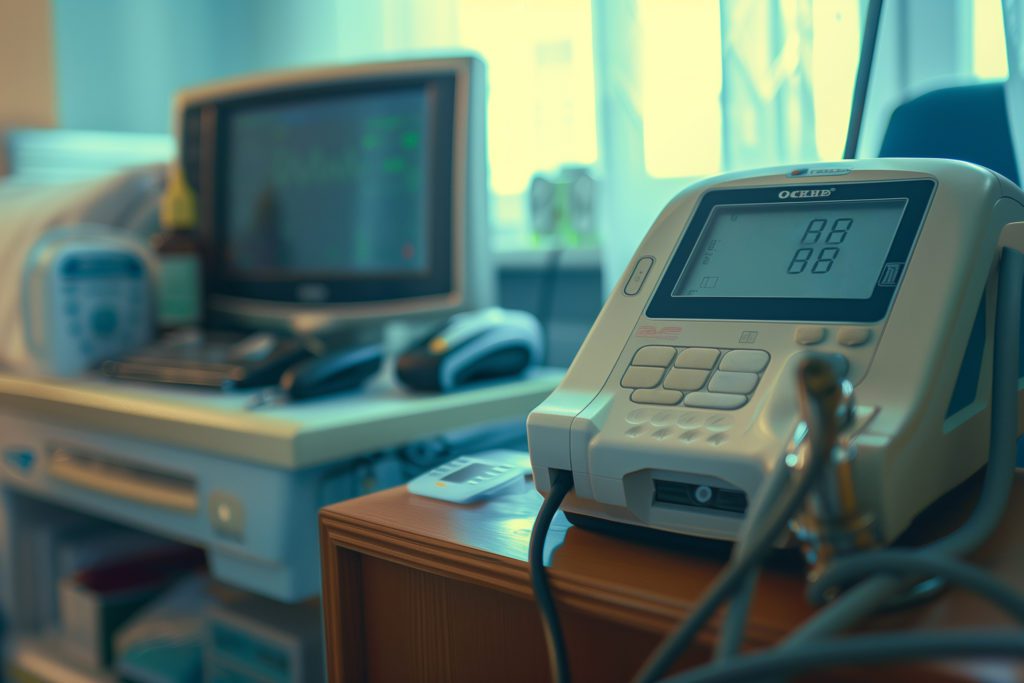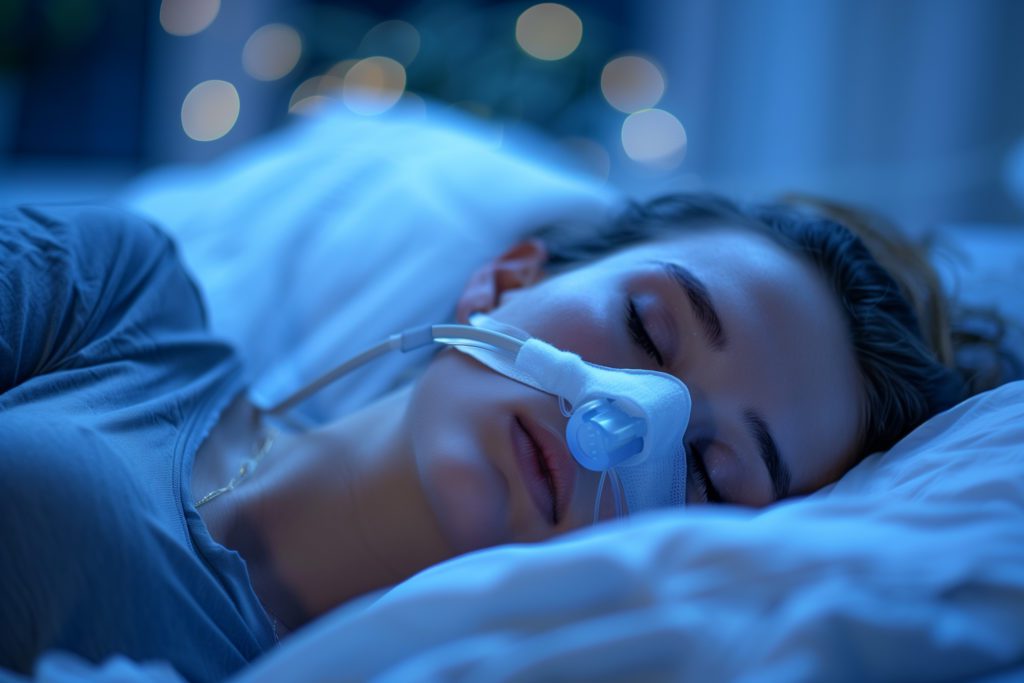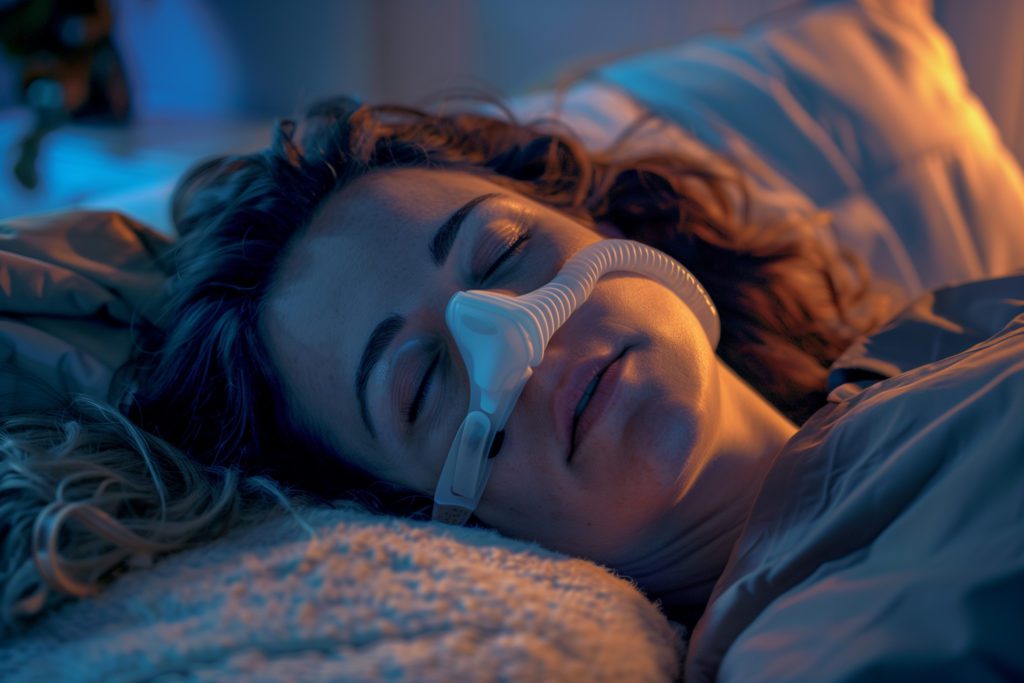
Obstructive Sleep Apnea and Blood Oxygen
How does obstructive sleep apnea disrupt blood oxygen levels and impact your health? Learn why treating OSA is crucial for better sleep, heart health, and well-being.

When sleep is strong, everything runs smoothly, but when it's weak, nothing seems to work quite right. And for people with obstructive sleep apnea (OSA), that weak connection happens more often than it should, and it's usually because of their blood oxygen levels.
Obstructive sleep apnea is a condition that involves interrupted breathing. Not only does this disrupt sleep, but it also leads to reduced blood oxygen levels. As a result, you wake up feeling tired and fatigued.
In this article, we'll discuss the relationship between obstructive sleep apnea and blood oxygen levels. Why do your blood oxygen levels matter so much, and how can obstructive sleep apnea mess with them?
What is Obstructive Sleep Apnea (OSA)?
OSA is the most common form of sleep apnea and occurs when the muscles at the back of the throat relax too much during sleep, causing the airway to become blocked. This leads to brief episodes where you stop breathing. Each time this happens, your body gives you a wake-up call, usually with a loud snore or gasp for air, bringing you back from the brink of deep sleep.
According to the American Academy of Sleep Medicine, OSA affects about 25 million adults in the U.S. alone. Common risk factors include age, obesity, and family history. It's also more common in men. However, you don't always have to meet these criteria—OSA can affect anyone.
So, how do you know if you have OSA? Common symptoms include:
- Loud snoring
- Choking or gasping during sleep.
- Waking up with a dry mouth.
- Excessive daytime sleepiness.
In severe cases, OSA can lead to complications like high blood pressure, stroke, and even heart disease. It's not just an annoyance; it's a serious condition that affects your overall health—especially your blood oxygen levels.
Understanding Blood Oxygen Levels During Sleep
One of your body's key responsibilities while you're off in dreamland is to keep your blood oxygen levels steady. Normally, your blood oxygen saturation should be somewhere between 95% and 100% during sleep, which means your body is getting all the oxygen it needs to function properly.
However, when you experience an apnea event, your blood oxygen level can take a dive. If this happens frequently, the cumulative oxygen deprivation can wreak havoc on your organs over time.
How Obstructive Sleep Apnea Affects Blood Oxygen Levels?
Each time an apnea event happens, there's a period where you're not getting enough air, which means your blood oxygen levels drop. This isn't just a one-off thing; it's a repetitive cycle that can occur hundreds of times a night for some people with OSA.
According to a study published in the journal Nature and Science of Sleep, blood oxygen levels in OSA patients can drop as low as 90% during severe episodes. This is well below the healthy range of 95-100%, and those dips can have significant consequences.
When blood oxygen levels drop, your heart works harder to pump oxygen-deprived blood to vital organs, which can lead to an increase in blood pressure and put extra strain on your heart. Over time, this can contribute to serious health issues like hypertension, heart disease, and arrhythmias.
But it's not just your heart that suffers—your brain is also affected. Repeated oxygen deprivation can lead to cognitive problems and memory issues, as well as increasing the risk of stroke. Essentially, OSA doesn't just ruin your sleep; it makes life harder for your organs and your overall health.
Monitoring Blood Oxygen Levels in Obstructive Sleep Apnea
Monitoring your blood oxygen levels during sleep is pretty simple—and crucial if you suspect obstructive sleep apnea (OSA). Devices like pulse oximeters or sleep trackers can keep an eye on your oxygen levels and let you know if something's off.
A pulse oximeter is a small device that clips onto your finger and measures the oxygen saturation in your blood. It's a quick, non-invasive way to get an instant readout of how well you're breathing during sleep. Many people with OSA use these to track their oxygen levels overnight, especially if they're starting treatment like a Continuous Positive Airway Pressure (CPAP) machine.
If you want to get a little more high-tech, there are apps and wearables that can also monitor your oxygen levels while you sleep. For example, Pillow tracks sleep stages and can give insights into sleep quality, including potential signs of OSA.
In fact, continuous monitoring is key for understanding the severity of OSA and how well treatments are working. If you notice a lot of dips in your oxygen saturation, it's time to talk to your doctor and maybe take a closer look at your treatment options.
Treating Obstructive Sleep Apnea and Improving Blood Oxygen Levels
Now that we know how obstructive sleep apnea wreaks havoc on blood oxygen levels let's talk about how to fix it. The good news is that OSA is treatable, and most treatments also help bring your oxygen levels back up to normal during sleep.
CPAP
The most common treatment is the Continuous Positive Airway Pressure (CPAP) machine. CPAP delivers a steady stream of air into your airway, keeping it open while you sleep, which means no more apneas, and more importantly, no more dips in blood oxygen levels.
Oral Appliances
For people who don't get along with CPAP, there are other options. Oral appliances that adjust the position of the jaw can help keep the airway open. In more severe cases, surgery might be needed to remove tissue blocking the airway.
Lifestyle Changes
Lifestyle changes can also go a long way. Weight loss, for example, can significantly reduce the severity of OSA, especially in overweight individuals. Even simple changes like sleeping on your side instead of your back can help prevent your airway from collapsing during sleep.
The Connection Between Obstructive Sleep Apnea and Blood Oxygen
So, what's the big takeaway? Obstructive sleep apnea and blood oxygen levels are closely linked, and the effects of this relationship go far beyond feeling groggy in the morning. OSA causes your blood oxygen to drop, and these repeated dips can lead to a host of health problems, from heart disease to memory issues.
But it's not all doom and gloom—there are effective treatments that can restore both your sleep and your oxygen levels to their healthy norms. So, let's make sure those oxygen levels stay in the sweet spot, so you can dream big without interruption!
FAQ
Are there specific oxygen saturation thresholds that indicate severe OSA?
Normal blood oxygen levels are above 95%, but OSA can cause levels to drop below 90%, sometimes as low as 70% in severe cases. Frequent and prolonged dips below 90% can indicate severe OSA, increasing risks of organ damage and requiring immediate treatment.
Is supplemental oxygen therapy beneficial for OSA patients?
Oxygen therapy alone does not treat OSA since it does not keep the airway open. CPAP is the preferred treatment. However, in some cases of severe oxygen desaturation, oxygen therapy may be combined with CPAP under medical supervision.
Can untreated OSA lead to long-term damage due to low blood oxygen levels?
Yes, chronic low oxygen levels from untreated OSA increase the risk of heart disease, stroke, cognitive decline, and metabolic disorders. Over time, the repeated oxygen deprivation can cause lasting damage to the brain, heart, and other organs.
How does altitude affect blood oxygen levels in people with OSA?
Higher altitudes have lower oxygen levels, which can worsen oxygen desaturation in OSA patients. The reduced oxygen availability makes apnea episodes more severe, increasing risks of cardiovascular strain. Some individuals may require CPAP adjustments or supplemental oxygen when sleeping at high elevations.
Can certain medications worsen oxygen desaturation in OSA?
Yes, sedatives, muscle relaxants, and opioids can worsen OSA by relaxing airway muscles, increasing the likelihood of obstructions. These drugs can lead to more severe drops in blood oxygen levels during sleep, making OSA harder to manage. Patients should consult a doctor before taking such medications.
Can sleeping position affect oxygen levels in OSA patients?
Yes, sleeping on the back can worsen oxygen desaturation by allowing the tongue and soft tissues to collapse into the airway. Sleeping on the side can improve airflow and reduce apnea events, leading to more stable oxygen levels during sleep. Special pillows and positional therapy may help.
Is there a link between OSA-related oxygen desaturation and metabolic disorders?
Yes, low oxygen levels during sleep can contribute to insulin resistance, weight gain, and increased inflammation, all of which raise the risk of diabetes and metabolic syndrome. Treating OSA can improve glucose metabolism and lower the risk of developing these conditions.

Written by
Dr Aqsa
As a Medical Doctor, Dr Aqsa, uses her knowledge to craft complex medical information that is understandable to the general public. For years, she has tried to improve health literacy and empower readers with valuable health knowledge through her articles, blog posts, and educational materials.
Download Pillow
Get help
Press & News
Legal
Connect
X (Twitter)
Company
Copyright © Neybox Digital Ltd.



